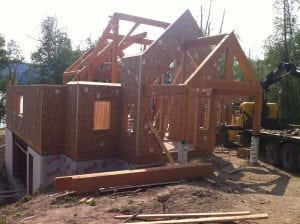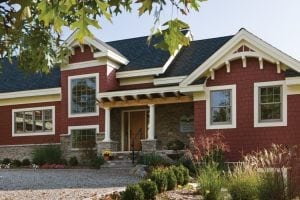
Energy Efficient Vacation Homes
Even though you may not be at your vacation home for the majority of the year, energy bills will likely comprise a majority of the cost to maintain the home while you are away.
Selecting energy efficient appliances, such as a refrigerator or LED exterior lighting, can help shave a few dollars off your monthly bill. However, controlling the climate inside your home, even when unoccupied, will offer you far more energy savings.
The Energy Envelope

A home’s energy envelope primarily consists of the foundation, walls, windows and doors, and roof. How tightly this shell works together determines a home’s ability to control energy loss.
If your home does not have a tight energy envelope, you might be paying to heat or cool air that is escaping your home. Continuously heating or cooling your home’s interior, even if you installed an energy efficient HVAC system, can cost a fortune without a tight energy envelope.
In a conventional home, energy can escape from a variety of places. These energy fluctuations occur via two primary mechanisms: convection (air leakage/ infiltration) and conduction (energy transfer through building materials). Therefore, how you build your vacation home determines how much it costs to heat and cool it.
Consider Building a Timber Frame Vacation Home

Traditionally, timber frame homes were built by erecting a frame and then infilling the space between the timbers. Although some timber homes built today still use the infill method, most have adopted the use of SIPs. Structural insulated panels, or SIPs, are a form of structurally sound, continuous insulation. SIPs contain large sheets of EPS (expanded polystyrene) between two sheets of OSB (oriented strand board). Timber frame and SIP systems are easily designed in tandem. The panels wrap around the standing timber, creating both the exterior walls and roof. This ‘skin’ around the timber skeleton eliminates almost all air leakage. And, the EPS insulation inside the SIPs dramatically slows down the process of conduction.
A timber frame home built with SIPs reduces energy costs much more than a home using traditional batt insulation. When combined with an efficient foundation, timber frame homes can have one of the tightest energy envelopes in construction. Learn more about Riverbend’ energy efficiency timber frame home building system.
Smart Tech for Your Vacation Home
After you have a tight energy envelope, you can add bells and whistles to help control energy costs. Gone are the days when snowbirds regulated moisture levels in their vacant homes with buckets of water or dehumidifiers. Now, thermostats can monitor the humidity in your home and adjust your HVAC system to correct any fluctuations. Advanced HVAC systems can even detect when you are away and go into power saving mode. Today, phone-controlled thermostats monitor the home’s temperature while you are away. And, certain thermostats can detect when you are en route to your home via GPS, timing the warming or cooling of the space to coincide with your arrival.
Need More Information?
Whether you’re looking for more information or would simply like to learn more about us and our services, don’t hesitate to contact us. Please follow the link below to access our online form or call us at 888.486.2363 in the US or 888.999.4744 in Canada. We look forward to hearing from you.
Order Riverbend Brochure Contact Us
